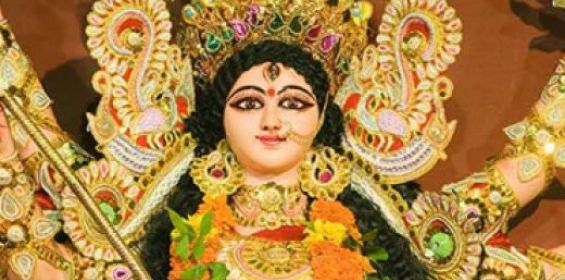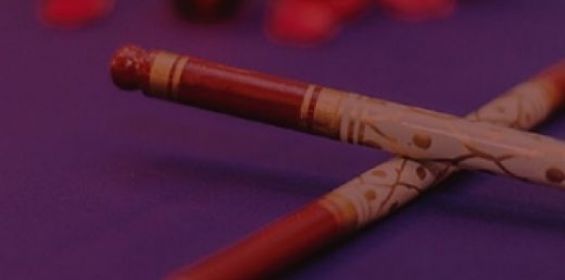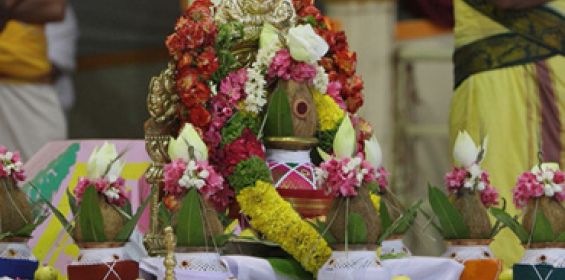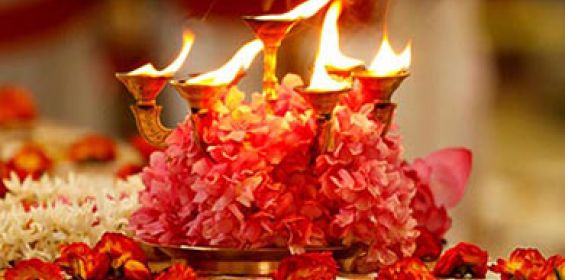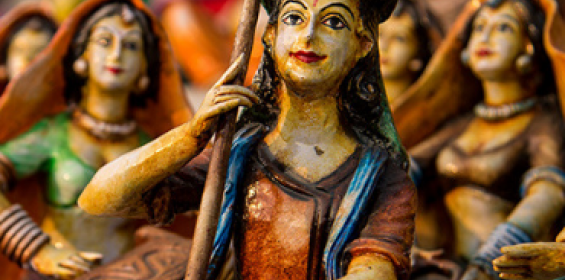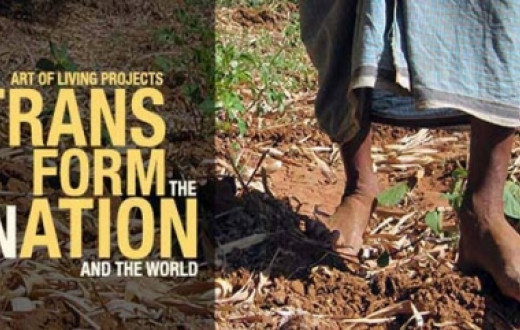How is Navratri Celebrated in Different Parts of India?
Diversity thrives. Everything here is unique. Be it language, food, or culture; even attires vary, depending on which part of the country we find ourselves in. It's no surprise then that our way of worshipping changes as per our diversified customs and rituals, giving that distinctive regional touch. The message being conveyed in the form of worship may very well be the same, but our way of communicating that message takes on a whole different flavor.
Navratri is one such example of celebrating this very diversity. The word Navratri means ‘nine nights’ in Sanskrit; nava meaning ‘nine’ and ratri meaning ‘nights’. During these nine nights and ten days, nine different forms of the goddess are worshipped. It's almost as if we're giving ourselves the time and space to rejuvenate and cleanse from within. Let us peek into the different ways of celebrating Navratri across India and witness its sheer diversity
Navratri Celebration in Northern India
In North India, Navratri is celebrated as the victory of Lord Rama over the evil king Ravana. It culminates in the celebrations of the Ramlila which is enacted ceremoniously during Dussehra. The effigies of Ravana, Kumbhakarna, are burnt to celebrate the victory of good (Rama) over evil forces on the 'Vijaya Dashami' day.
These nine days are filled with special pujas, yagnas, homas, fasting, meditations, silence, singing, and dancing honoring Mother Divine, her entire creation - all forms of life, all forms of art, music, and knowledge. She is worshipped as the savior of mankind from ignorance and all forms of evil.
Up north, the custom of giving gifts on Navratri is rather common. These could be sweets, Indian clothes for both men and women, and also, something useful for the house. Shares Shobhita Sharma, a Delhi-based architect, about Kanya Puja, “My fondest memory of Navratri is being invited by the neighbors on the eighth and the ninth day, and being revered like a goddess. Of course, it helped that my other girlfriends and I were given some money and sweets at the end of the ceremony too."
Navratri Celebration in Western India

In Western India, particularly in the state of Gujarat, Navratri is celebrated with the famous Garba and Dandiya-Raas dance. Garba is a graceful form of dance, wherein women dance gracefully in circles around a pot containing a lamp. The word ‘Garba’ or ‘Garbha’ means womb, and in this context the lamp in the pot, symbolically represent life within a womb. Besides the Garba is the Dandiya dance, in which men and women participate in pairs with small, decorated bamboo sticks, called dandiyas in their hands. At the end of these dandiyas are tied tiny bells called ghungroos that make a jingling sound when the sticks hit one another. The dance has a complex rhythm. The dancers begin with a slow tempo, and go into frenzied movements, in such a manner that each person in a circle not only performs a solo dance with his own sticks, but also strikes his partner’s dandiyas in style!
Jeenakshi, a Gujarat based homeopathic doctor and Art of Living teacher describes the festivities, “As for our traditions, in Gujarat, we play garba for ten days, from nine in the evening to four in the morning everyday. This includes men, women, and even, children. Mind you, each city, whether it's Ahmedabad or Baroda has its own style of garba."
“More than the pujas, we are fond of playing garba, which is organized by every society and club in Gujarat. One can easily find classes for it in every city and town. Plus, we all especially buy new dresses - chaniya-cholis for women, and turbans and kedias for men. Some people even fast during these days, despite which they attend garba each evening. In short, “Navratri is the time to visit Gujarat and take part in these festivities."
Navratri Celebration in Eastern India
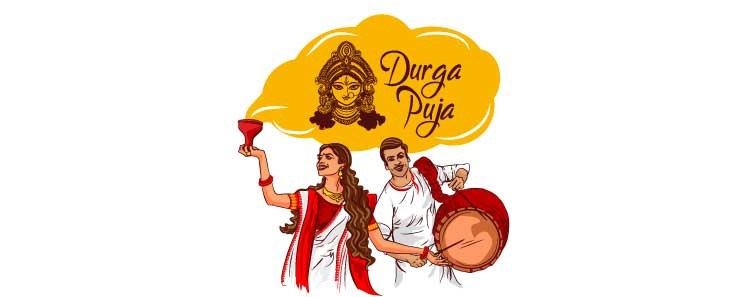
The last five days of Sharad Navratri is celebrated as Durga Puja in West Bengal and North East India. Devi Durga is shown with various weapons in her hand, riding on a lion. Lion signifies the dharma, the will power, while the weapons denote the focus and severity needed to destroy the negativity in our minds. Eighth day is traditionally Durgashtami. Exquisitely crafted and decorated life-size clay idols of the Goddess Durga depicting her slaying the demon Mahishasura are set up in temples and other places. These idols are then worshipped for five days and immersed in the river on the fifth day.
Jonaki, an engineer from Kolkata, shares “Out here, Navratri is celebrated as Durga Puja, for which we start planning months in advance. These five days of puja are meant for rest, family and going to different Durga puja pandals, each with a different theme and vibe, and of course, a gorgeous & life-sized idol of the goddess Durga. Some pandals are super fancy, done up with great lighting and sound, while the others are more simple and elegant. It's also the time when women take out their gorgeous Bengali saris, and men dress up in kurta-pyjamas. But the favorite part of the puja is attending the Maha Aarti every evening with the sound of the dhol in the background, and as a result, the trance-like state many of us experience."
Navratri Celebration in Southern India
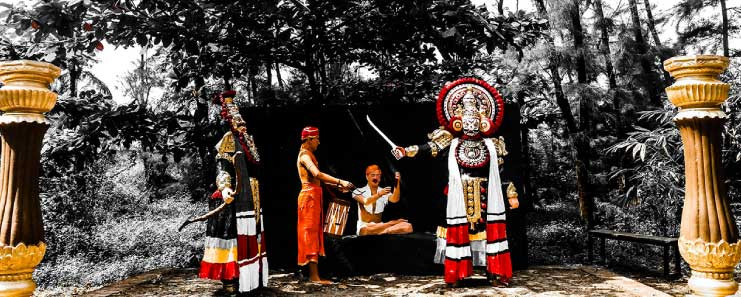
In south India, Navratri is the time to invite friends, relatives and neighbors over to look at the Kolu, which is essentially an exhibition of various dolls and figurines. In Kannada, this exhibition is called Bombe Habba, Bommai Kolu in Tamil, Bomma Gullu in Malayalam, and Bommala Koluvu in Telugu.
Navratri is referred to as Dasara in Karnataka. Yakshagana, a night-long dance in the form of epic dramas from puranas are enacted during the nine nights of navratri. The Mysore Dasara is celebrated with great pomp and show depicting the triumph over evil. It is observed as the state festival steered by the royal family of Mysore and their jumbo savari.
The Ayudha Puja is conducted in many parts of South India on the Mahanavami (Ninth) day with much fanfare. Agricultural implements, all kinds of tools, books, musical instruments, equipments, machinery and automobiles are decorated and worshipped on this day along with the worship of Goddess Saraswati.
The 10th day is celebrated as 'Vijaya Dashami'. It is the day of “Vidyaarambam” in Kerala, where young children are initiated into learning. In the southern city of Mysore Dussehra is celebrated with grand processions on the streets carrying Goddess Chamundi.
In the end, Navratri is really about reconnecting with something much bigger than us and these rituals are tools that help us do that. Plus, these nine days have been given to us to rest, rejuvenate and connect with ourselves which, in turn, helps us connect better with our loved ones and celebrate life.
Join live celebrations of Navratri 2022 (Sept 26th - Oct 5th, 2022).
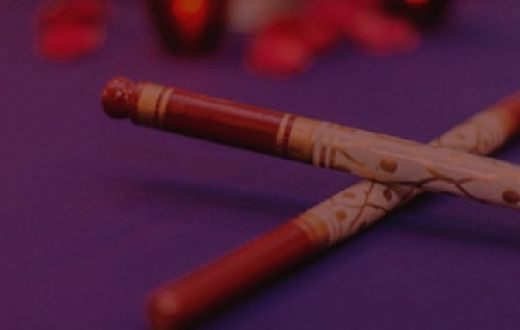
Dandiya, Garba and Navratri!
Discover the inimitable connection between Navratri and the dance forms of Dandiyaand Garba.

Celebration in Bangalore Ashram
Discover exciting ways to celebrate Navratri

Colors of Navratri
The nine days of Navratri are associated with nine colors. Explore the connection.
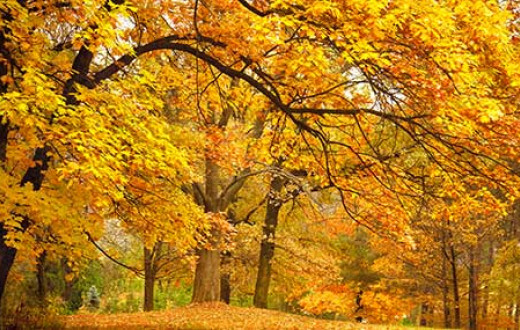
When is Navratri celebrated
Gratify your scientific temper with this in-depth read on the science behind Navratri.





